Rhomboid muscles
What are Rhomboid muscles?
The rhomboid muscles are a group of muscles located in the upper back region, between the spine and the shoulder blades. They are named for their shape, which resembles a rhombus or diamond shape.
Two bilateral, superficial muscles in the upper back are the rhomboids. They contain two practically comparative muscles called rhomboid minor and rhomboid major. Along with the trapezius, levator scapulae, and latissimus dorsi, they contain the shallow layer of the extraneous back muscles.
Between the nuchal ligament, the spinous processes of thoracic vertebrae, and the scapula are the rhomboid muscles. The rhomboids primarily rotate the glenoid cavity and retract the scapula superomedially when innervated by the dorsal scapular nerve. Hence, the rhomboids are essential to settle the scapula into position and building up the shoulder.
Origin and insertion of Rhomboid muscles
A small muscle in the shape of a cylinder with two layers is the rhomboid minor muscle. ventral and dorsal They partially cover the scapulae of the inferior levator. The nuchal ligament and spinous processes of the seventh cervical (C7) and first thoracic (T1) vertebrae are the sources of the rhomboid minor. The muscle inserts into the base of the medial end of the scapula’s spine by extending obliquely in an inferolateral direction; the dorsal layer joins dorsolateral and sub-par compared to levator scapulae while the ventral layer inserts anteromedially to levator scapulae. The rhomboid minor and serratus anterior muscles’ fasciae unite at the ventral layer’s insertion point. In specific people, a slight muscle called rhomboid occipitalis can stretch out between the rhomboid minor and the occipital bone.
The spinous processes of the second to fifth thoracic vertebrae (T2-T5) are the source of the broad quadrilateral muscle known as the rhomboid major. The muscle inserts into the medial border of the scapula, between the inferior angle and the root of the scapula’s spine, by extending obliquely inferolateral. The attachment occurs on both the dorsal and coastal sides of the scapula’s medial border.
Relations
The trapezius muscle covers the rhomboid muscles, which are located above the deep (intrinsic) muscles of the back. The only exception is a small triangular area known as the “triangle of auscultation” that extends over the inferior border of the rhomboid major. The latissimus dorsi muscle lies inferiorly, the trapezius muscle lies superiorly, and the rhomboid major muscle lies superiorly. It is a crucial clinical landmark that is used for back lung auscultation.
Although the rhomboids are typically two distinct muscles, some people can fuse them. The superior portion of the rhomboid major is partially overlapped by a rhomboid minor.
Innervation
The dorsal scapular nerve (C4-C5), a branch of the brachial plexus, innervates both rhomboid muscles.
Blood supply
The minor and major rhomboids receive blood from three different sources:
the deep branch of the transverse cervical artery and the dorsal scapular artery. The thyrocervical trunk serves as the source of these two blood vessels.
The thoracic aorta’s dorsal branch from the upper five or six posterior intercostal arteries.
Function of Rhomboid muscles
Scapular retraction around the scapulothoracic joint is the primary function of the rhomboid muscles. The simultaneous sliding of the scapula superiorly and medially along the trunk is referred to as scapular retraction. The glenoid cavity is rotated inferiorly as a result of this superomedial scapula movement, lowering the shoulder girdle. The rhomboids aid in maintaining correct posture when sitting, standing, and walking by opposing excessive scapular protraction.
Additionally, the scapula is held in place by the contraction of the rhomboids. This provides a fulcrum around which the upper limb can move and an anchor point in space from which various upper limb muscles can act.
Clinical relations
The mechanics of the shoulders and upper body posture can be significantly influenced by the rhomboid muscles. Several characteristics are typically present in poor upper body posture. The first is that the shoulders, particularly the scapulae, frequently protrude. Pain in the upper back will frequently result from this, particularly along the medial border of the scapulae. Thus, boosting the rhomboids, which are answerable for scapular withdrawal, will assist with easing pain and improving posture.
The rhomboid muscles can become dysfunctional when they are subjected to constant postural strain. Poor shoulder mechanics can result from this limitation of superior rotation of the scapula and glenoid cavity. In turn, activities that require arm elevation above shoulder height can cause soft tissues in the shoulder region to become injured and painful. Such measures incorporate donning exercises like tennis and volleyball.
Assessment
Most of the time, rhomboid injuries are caused by poor postures, such as carrying heavy objects, thoracic hyperkyphosis, forward head posture, and upper crossed syndrome. Muscles like the rhomboid muscle weaken and become more susceptible to strains and tears in people who don’t exercise often.
Palpation
Palpated collectively. Because the trapezius muscles cover the rhomboids, you need to relax them by placing your hand on the small of your back. Place your fingers under the vertebral border to palpate. The rhomboids push the patient’s fingers out as they lift their hand off their back (with resistance if necessary).
Rhomboid muscle stretching
Rhomboids stretch
A doorway or squat rack-assisted rhomboid stretch is what this is. Increase the rhomboids of the anchor arm’s stretch by reaching across with the other hand.
Doorway rhomboids stretch
Both rhomboid muscles are stretched during this exercise. With both hands crossed over and thumbs pointing downward, hold a stable object, such as a doorway, in the position of a squat rack. Spread your shoulder blades apart from one another by leaning back and extending your arms.
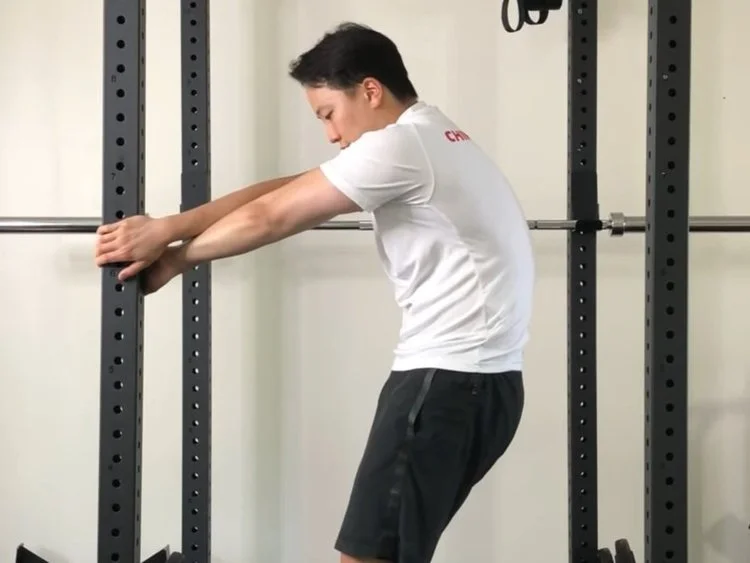
Rhomboids muscle strengthening exercise
Rhomboids active massage
The scapular retractors can be massaged using this self-massage method. Place a massage ball or lacrosse ball on a tender area between the scapulae and spine to get started. Reach your arm straight out to the side while lying on the ball to lightly compress the muscle. Gradually cross your arm across your chest to loosen up the scapular retractors effectively. Return slowly to the beginning and do it up to three times. If necessary, select another location.
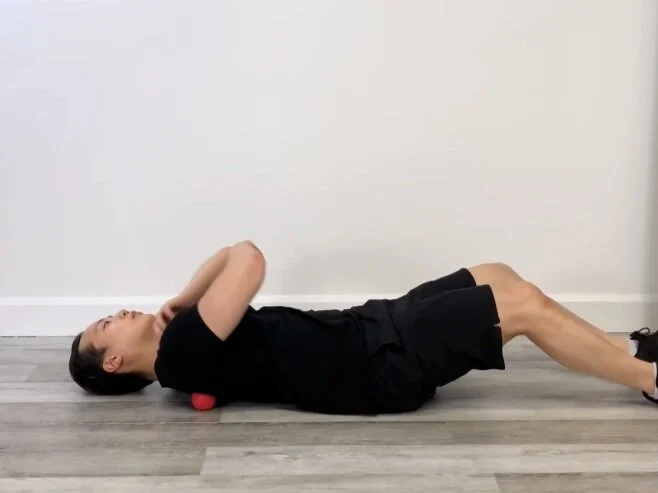
Seated banded reverse fly
This is an exercise for strengthening the scapular retractors. Attach a dumbbell to your feet by tying a band around it. Pull the band by spreading your arms out while keeping your elbows slightly bent and grabbing both ends with your hands. Try to squeeze the shoulder blades back together like you would a pencil. As you finish the exercise, keep your shoulders back and down to isolate the movement from your upper trapezius.

Banded bent over reverse fly
This is an exercise for strengthening the scapular retractors. Step on a band and squat until your hands are above your knees. With your knees slightly bent, keep a neutral spine. Pull the band by spreading your arms out while keeping your elbows slightly bent and grabbing both ends with your hands. Try to squeeze the shoulder blades back together like you would a pencil. As you finish the exercise, keep your shoulders back and down to isolate the movement from your upper trapezius.
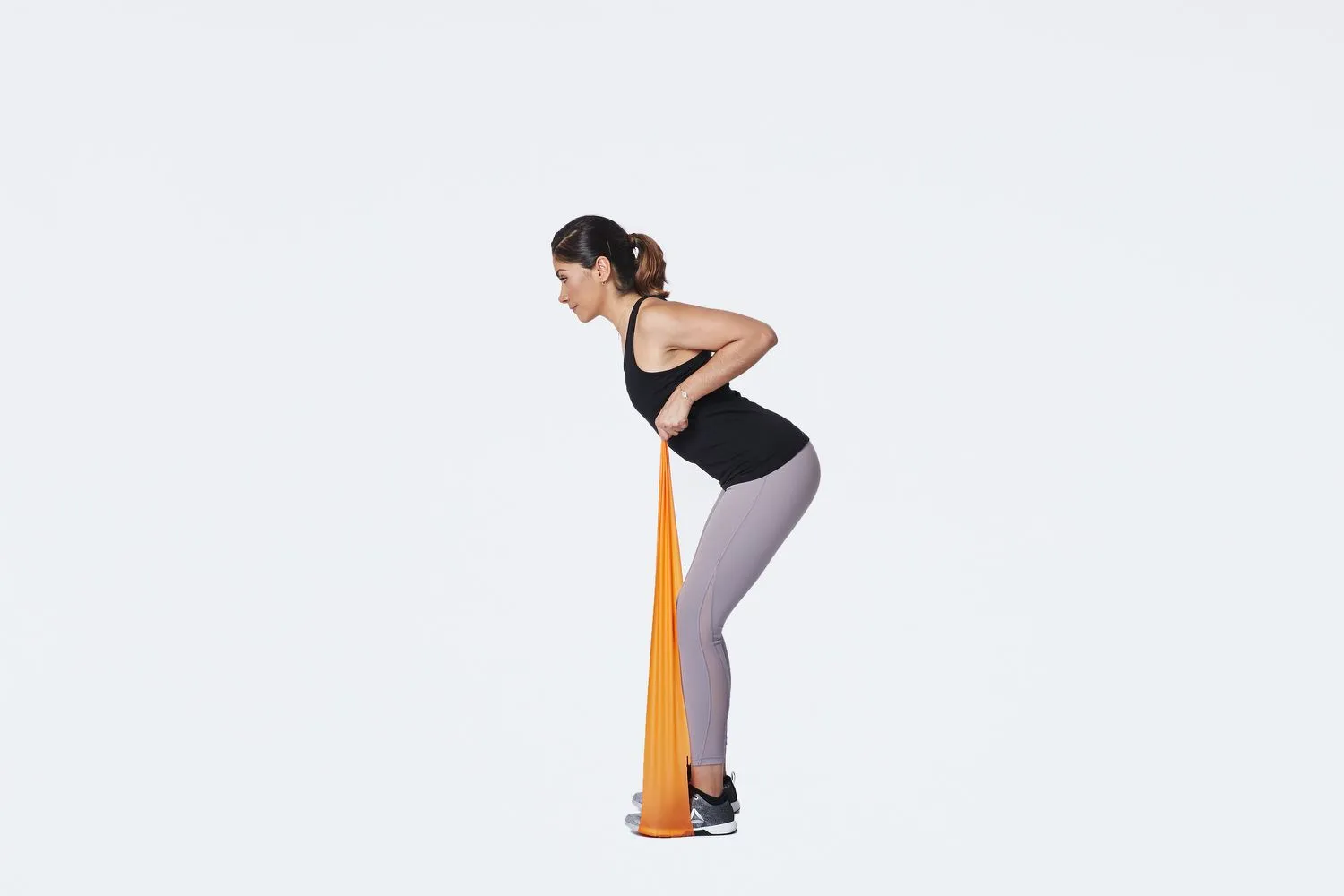
Seated banded row
This is an exercise for strengthening the scapular retractors. Attach a dumbbell to your feet by tying a band around it. Make a row by grasping the band at both ends with your hands. Try to squeeze the shoulder blades back together like you would a pencil. As you finish the exercise, keep your shoulders back and down to isolate the movement from your upper trapezius.
Floor angel
This exercise helps strengthen the shoulders, upper back, and posture. This is also an exercise that is based on your effort level; the exercise gets harder the more effort you put into it. In a crouching position, lie on your back with your knees bent and feet flat on the ground. Anchor your elbows and wrists to the floor and keep your arms close to your body at 90 degrees. Maintaining floor contact with your elbows and wrists, slide your forearm along the floor until you reach an overhead position. To finish a repetition, return to your starting position.
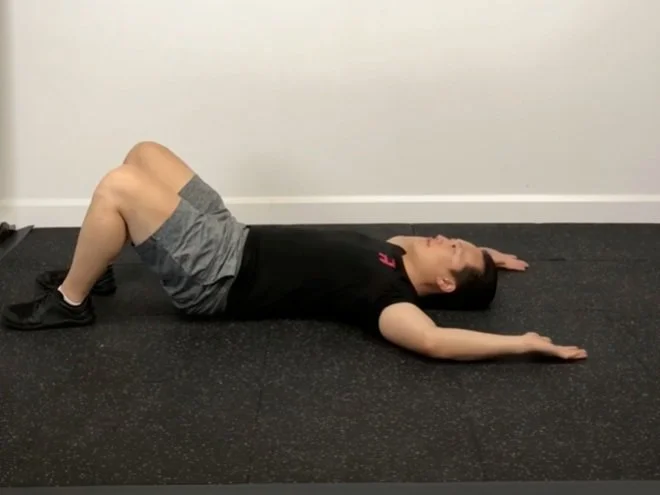
Thread the needle
This is a thoracic mobility practice that challenges revolution and flexion. This should be done on a yoga mat or soft flooring. Lean back with your hips and begin on your hands and knees. Use the other arm to reach across and below the body while extending one arm directly overhead. Before switching sides, take two to three long sighs.
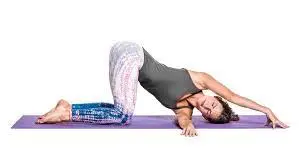
Cuffed angels
This exercise will challenge your shoulder and scapular mobility while strengthening your upper back and shoulders. With your forehead supported by the floor, lie down on a yoga mat. Put your hands behind your back and raise your elbows as high as you can toward the ceiling. As you move your arms into an overhead press position, try to keep this elbow height.
Air angel
This is an upper back and postural strengthening exercise. Raise your arms in front of you while lying on a yoga mat with your forehead supported by the floor. While raising your forearms as much as you can toward the ceiling, keep them as parallel to the ground as you can. Press your arms above without bringing your arms and return down to begin.
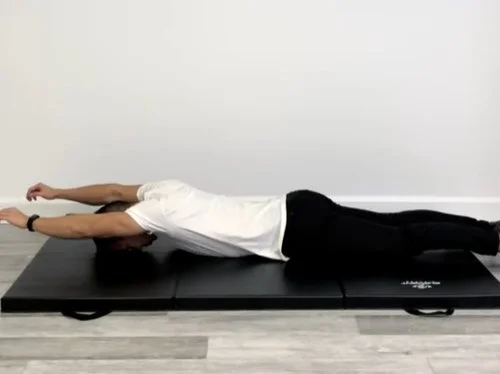
Dumbbell bent over row
This is a strengthening exercise for the upper back and scapular retractors. Hold two loads and twist around at the hips until your hands are at knee level. With your knees slightly bent, keep a neutral spine. Pull the band toward your abdomen by grasping both ends with your hands to complete a row. Try to squeeze the shoulder blades back together like you would a pencil. As you finish the exercise, keep your shoulders back and down to isolate the movement from your upper trapezius.
Banded bent over row
This is an exercise for strengthening the scapular retractors. Step on a band and squat until your hands are above your knees. With your knees slightly bent, keep a neutral spine. Pull the band toward your abdomen by grasping both ends with your hands to complete a row. Try to squeeze the shoulder blades back together like you would a pencil. As you finish the exercise, keep your shoulders back and down to isolate the movement from your upper trapezius.
Banded robots
This is a stability and strengthening exercise for the upper back and shoulders. This exercise might be finished standing or situated. If you’re standing, wrap an exercise band around a sturdy object like a handrail, squat rack, or pole. If you are seated, encircle one foot with the band and squeeze it together with your feet. By bringing your shoulder blades together, pull the band back. Start with your hands about shoulder height and work your way up to raising your arms overhead. To keep the lower arm lined up with the ground, keep the elbows stacked straightforwardly underneath the wrists.
Armadillo stretch
This is a stretch exercise that involves scapular protraction and thoracic flexion. Begin by sitting on the floor with both of your legs together and twisted to 90 degrees before you. To secure your thighs, wrap your hands and forearms around your thighs. Allow your upper back to curl or slouch as you lean back. Relax your shoulders at the same time and let your scapula slide forward. Take 3-5 deep breaths and hold the end range position for 20-30 seconds.
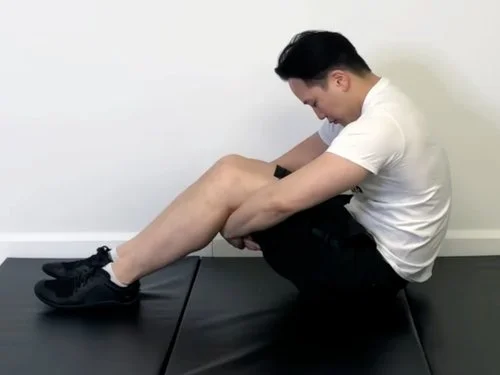
Eccentric reverse fly
The scapular retractors and shoulder horizontal extensors are strengthened through the use of a band in this exercise. Raise a band to just below shoulder height while holding it with your palms facing up. Pull the band apart so that the middle touches your chest, then slowly, in a beat of 5-7 seconds, return to the starting position.
Face pulls
This is an upper back and rotator sleeve boosting activity that uses a band as the method of opposition. Hold a band in the palm of your hand so that it flows from your pinky to your thumb as you loop it around your foot and point your toes down. Alternately, you can perform this exercise standing or seated in a chair with the band attached to a stable object like a squat rack or banister. Pull the band towards your face by raising the elbows to bear level and hands to ear level. Engage the muscles in the upper back by squeezing the shoulder blades back.
Incline bench reverse fly
The muscles in the upper back can be strengthened with this exercise. This exercise isolates the scapular muscles more effectively because it uses a bench to stabilize the thoracic spine. Place a bench on an incline of 45 degrees and lie down with your chest up on it. Lift the weight by raising your arms to the side while holding on to two dumbbells. You might have a slight curve in the elbows. Lead the movement by focusing on squeezing the shoulder blades back and downward. To prevent thoracic hyperextension, keep the chest on the bench.
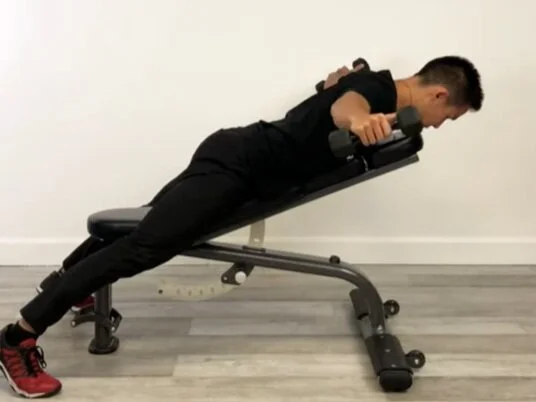
Scapular rows
Scapular retraction is the focus of this exercise, not shoulder extension or elbow flexion. The purpose of this is to separate or uncouple motion at the scapulothoracic joint. Hold a band with your arms straight out in front of you and anchor it down in front of you at about chest height. To initiate scapular retraction, squeeze your shoulder blades together.
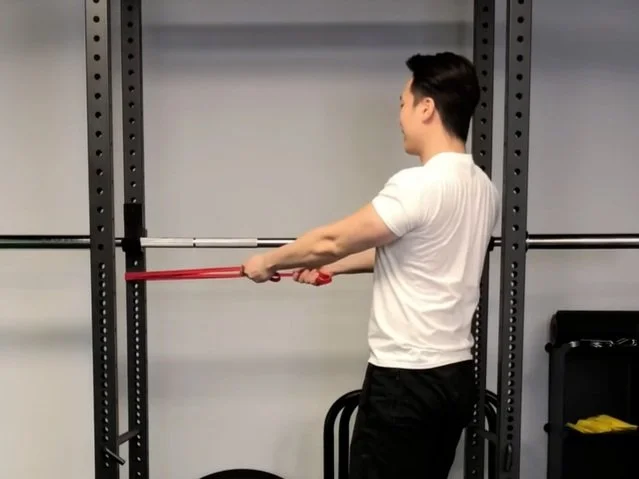
Seated rotation and reach
This is a desk or office-based exercise for thoracic mobility. Reach toward the ceiling with one arm raised overhead. Utilize your other hand to arrive across the body and pivot your spine that way.
Seated floor taps
This is a mobility exercise for a thoracic rotation that you can do at your desk or in the office. Put one hand behind your head and reach for the floor with the other. As you reach down, follow the path of your inner shin. To separate rotation from the lumbar spine, bench at the low back.
FAQ
Why is it hurting in my rhomboid major?
Overuse of the arm and shoulder is typically the cause of a rhomboid muscle strain or spasm. This could be caused by overhead tasks like serving a tennis ball or reaching to put something on a high shelf. Rowing.
Is rhomboid pain curable?
Rest and time will help heal rhomboid sprains and strains. It may take days to months for the injury to heal, depending on its severity. Consult your primary care physician or an orthopedic specialist if you injured your rhomboid muscles and the pain persists.
Is it beneficial to massage rhomboid pain?
Using a massage ball, you can massage your rhomboid muscles at home. Place the back rub ball between your scapula (shoulder bones) and spine. Start rolling the ball over the affected area by pressing it against the wall. Your rhomboid pain may make you feel quite at ease.
Why do rhomboids become swollen?
Poor posture, particularly prolonged hunching over a computer. Rowing movements make pulls. Motions that are repeated
How long does a rhomboid muscle take to recover?
The severity of the strain will determine how long it takes to recover from rhomboid muscle pain. Within three weeks, most mild strains will be healed. Healing from more severe strains can take several months. During recovery, it is essential to avoid strenuous exercise and heavy lifting.



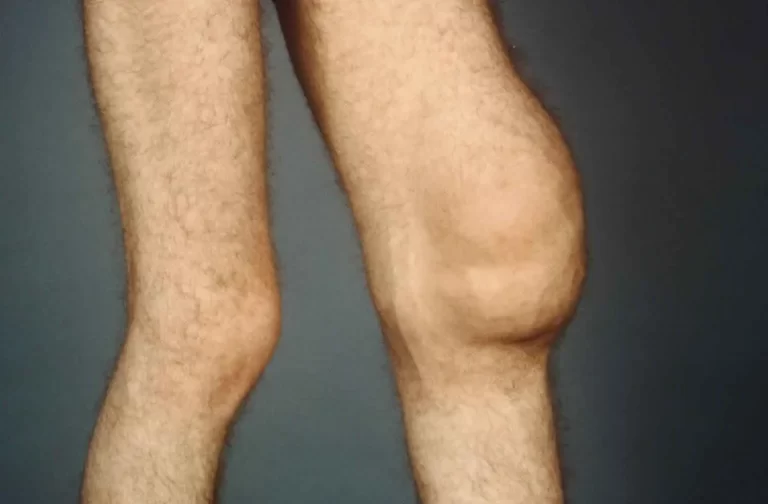
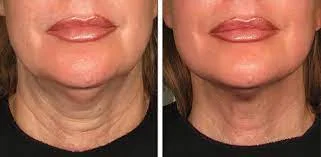
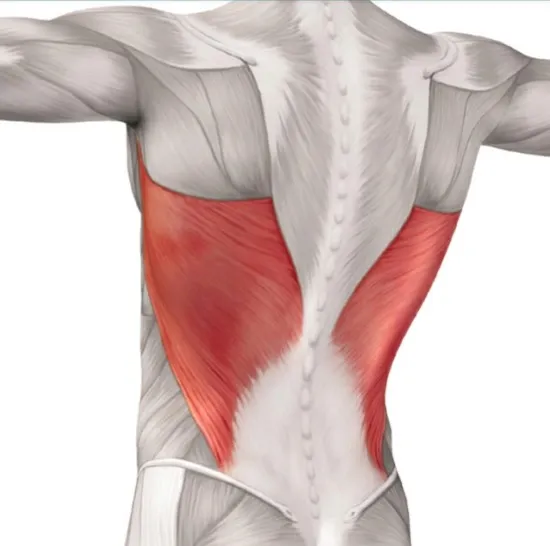
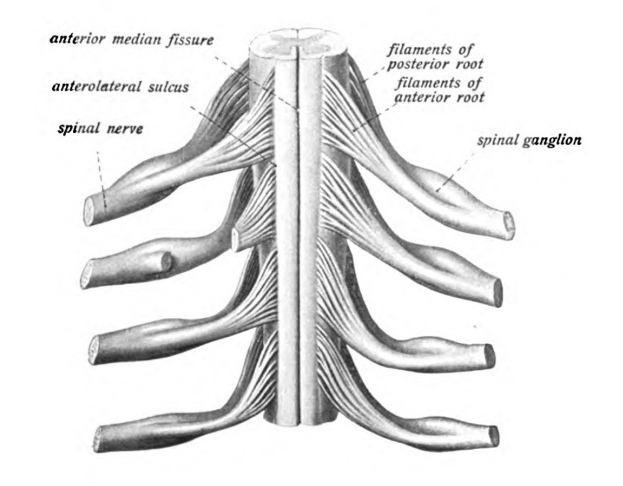
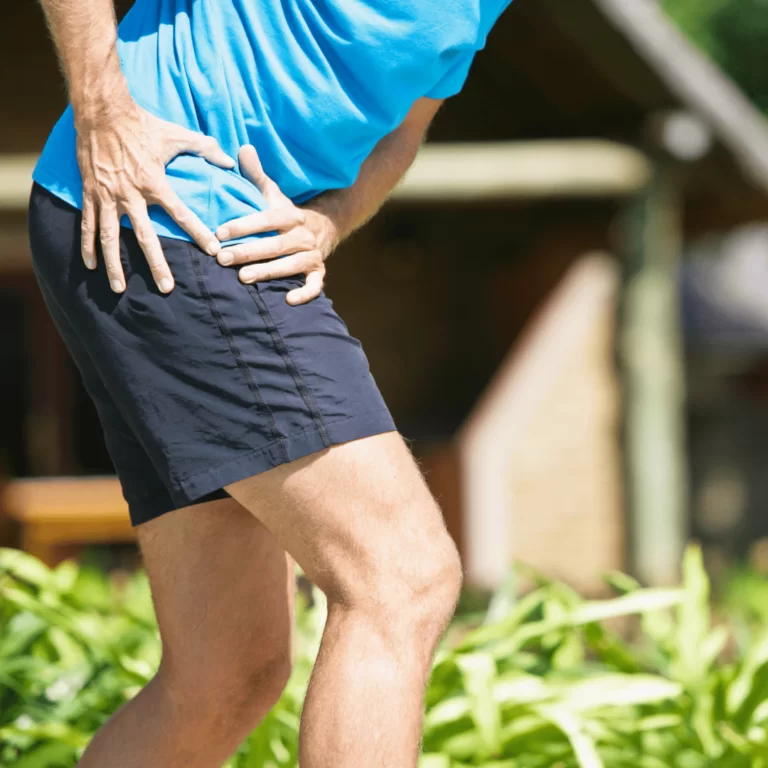
2 Comments